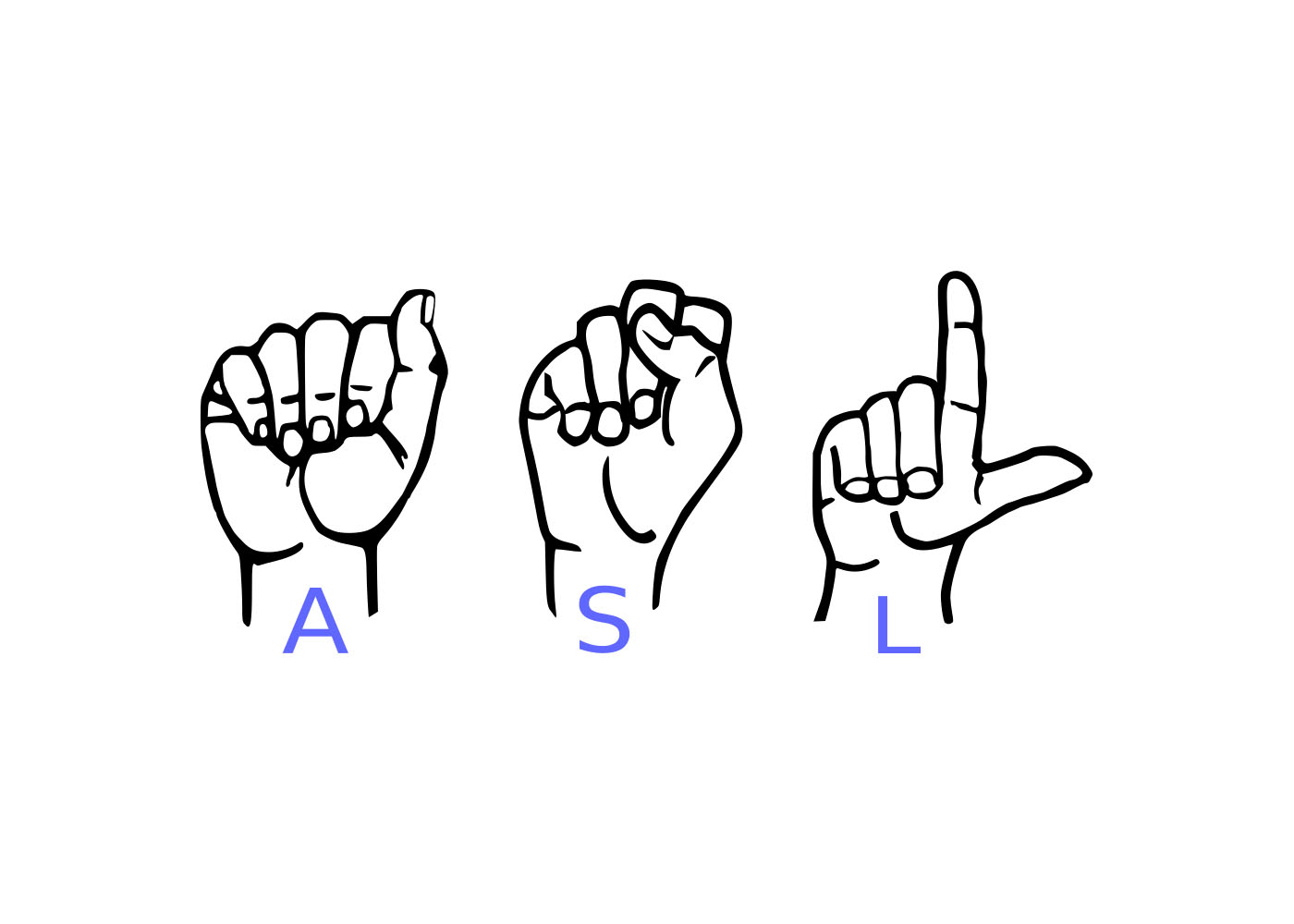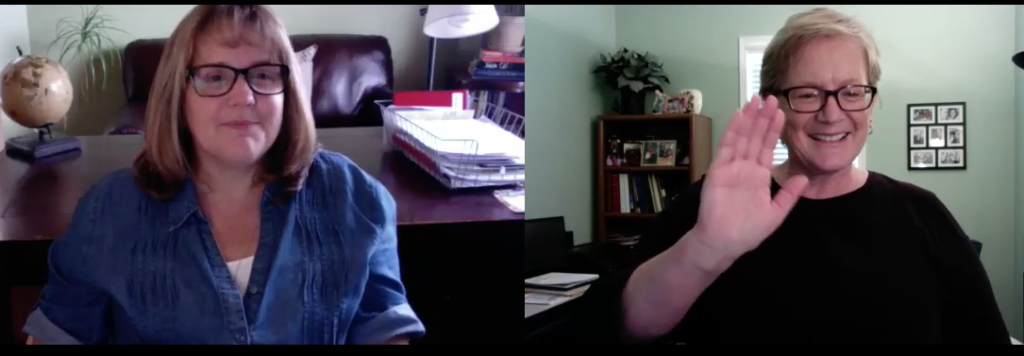Sign of the times
In response to high demand on campus and across the country, the American Sign Language program has added a minor and an online certificate program

Lauren Romanchek remembers the moment from her childhood when Santa Claus became real.
It happened while watching a memorable scene in the 1994 remake of “Miracle on 34th Street,” where Santa meets a Deaf child and is able to communicate with her – singing “Jingle Bells” and discussing her Christmas wish list – by using sign language.
“I was like, ‘Look at that. He has amazing knowledge. He can communicate.’ I remember thinking that was so cool,” said Romanchek, a senior in biology from Lake Forest, Illinois.
That scene sparked an interest in young Lauren that became a passion once she enrolled at Purdue. This year, she will become the first student to graduate with the School of Languages and Cultures’ brand-new minor in American Sign Language (ASL) and Deaf Studies.
“It’s definitely an accomplishment, and I’m really proud of how far I’ve come, but it’s a testament to the amazing program we have here,” Romanchek said. “I really came in with net neutral, nothing, no knowledge at all, and in two years, I took sign language 101, 102, 201, and 202, plus a culture class. They gave me the confidence to be able to say, ‘I want more. I want harder classes. I want more challenging classes. Let’s take poetry. Let’s take linguistics.’”
In order to complete the minor, Romanchek took advanced-level courses online through Gallaudet University, a school for the Deaf and hard of hearing in Washington, D.C. Starting this fall, however, a series of Purdue-based 300-level courses will become available once the minor officially launches.
“People have been asking about the minor for ages now – whether we’ll offer it and when,” said Jennifer William, professor and head of the School of Languages and Cultures. “And so finally, in the fall, that will be an option for students. We’re super excited about that.”
The demand for an ASL minor – and perhaps, someday, a major – remains anecdotal until students follow through on their expressed interest by enrolling. But there is no mystery surrounding Purdue undergraduates’ desire to take the introductory ASL courses.
It has been tremendously difficult to register for ASL 101 ever since it joined the School of Languages and Cultures’ set of language offerings in 2014. Lecturer Sharon Borkowski said that while the department’s instructors can currently accommodate only 80 students in a semester, 400 students attempted to register for ASL courses last fall.
“I know it’s not infinite demand, but it almost feels like we could just open up more and more sections and they would fill,” William acknowledged.
Romanchek shared multiple theories about why that might be, including that ASL is a unique option to satisfy language requirements, and that it’s simply an exciting skill to learn. She found the subject matter so enthralling after taking her first ASL courses at Purdue that she joined the university’s ASL club and regularly met with a friend at Purdue Memorial Union to practice their signing skills.
“In general, the kids that take sign language and really fall in love with it are very vocal about it,” Romanchek said. “We’ll go to our friends and say, ‘Oh my gosh, we learned this or that,’ or, ‘Hey, do you want to learn how to sign the word for this or the word for that?’ And so, the kids that are in this program are really talking about it.”
Purdue students are not unique in that regard. ASL is one of the most popular language offerings nationwide. According to an enrollment report published in 2018 by the Modern Language Association, ASL ranked third among the most-studied languages, trailing only Spanish and French.

The overwhelming demand leaves Borkowski and senior lecturer Robin Shay feeling spread thin as the program’s only current full-time faculty members, with the hiring process under way to add a third full-time ASL lecturer this fall. Their hope is that they will gain access to additional resources by adding the minor and a new online certificate program scheduled to launch this summer.
Aimed at professionals like police officers, nurses, and special education teachers who might need to communicate with Deaf citizens on the job, the certificate program could have significant practical value – particularly in emergency situations where a translator is not available.
“For a lot of people in America, you’ve never met a Deaf person before, you’ve never seen a Deaf person before,” said Romanchek, an emergency medical technician (EMT) who plans to work as a physician’s assistant after graduation. “It’s not something you think of, and so to just even have a couple of basic classes to give you that awareness, that background knowledge, to make you prepared to handle that situation would be amazing.”
Borkowski noted that “there are some universities now that offer Deaf history for an entire semester. Then, an entire semester on Deaf education and ASL poetry, ASL literature. I would love to teach an entire semester on just ASL and Deaf history, which would include Deaf education, instead of piling that into the culture and society class (ASL 280, American Deaf Community: Language, Culture, and Society). So there really can be entire semesters on any one of those topics.”
William and the ASL instructors share high hopes for their program. Purdue has already distinguished itself among Big Ten universities by approving an ASL minor.
“There could be so many more offerings than just the language and then the culture: poetry, literature, history, acquisition,” Shay said. “There is an entire field of study out there that’s much deeper than just the language itself. We’re very proud of our language and our culture and our heritage. It’s very unique, and I would love for the university and people in general to realize what a rich, full, and complex language and culture we have.”
ASL 101 STUDENTS SHARE THEIR SKILLS
Students Audrey Quinn and Layla Grimes shared the following videos from their ASL 101 course taught by Rita Mowl. The students were instructed to use American Sign Language to share details about their language background in this class assignment. The assignment required students to list their native language and other languages learned during different periods of their lives. While transitioning from one period to the next, the students were to raise their eyebrows while mentioning the period.https://youtu.be/rwU5chDr7IU
https://youtu.be/NjiH7v9UqV4